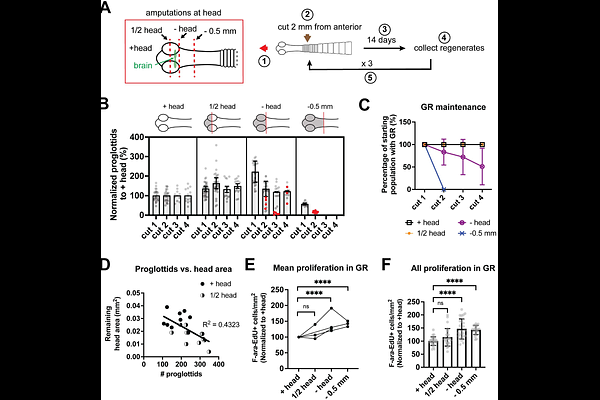Anterior-posterior polarity signals differentially regulate regeneration-competence of the tapeworm Hymenolepis diminuta.

Anterior-posterior polarity signals differentially regulate regeneration-competence of the tapeworm Hymenolepis diminuta.
Nanista, E. M.; Poythress, L. E.; Skipper, I. R.; Haskins, T.; Cora, M. F.; Rozario, T.
AbstractCompetence to regenerate lost tissues varies widely across species. The rat tapeworm, Hymenolepis diminuta, undergoes continual cycles of shedding and regenerating thousands of reproductive segments to propagate the species. Despite its prowess, H. diminuta can only regenerate posteriorly from a singular tissue: the neck or germinative region (GR). What cells and signaling pathways restrict regeneration competence to the GR? In this study, we show that the head regulates regeneration-competence by promoting maintenance of the GR and inhibiting proglottid formation in a distance-dependent manner. Anterior-posterior (A-P) patterning within the GR provide local signals that mediate these head-dependent responses. {beta}cat1 is necessary for stem cell maintenance, proliferation and proglottidization. On the other hand, sfrp is necessary for maintaining the GR at its proper length. Our study demonstrates that the head organizes a balance of pro- and anti-regeneration signals that must be integrated together and therefore control competence to regenerate.